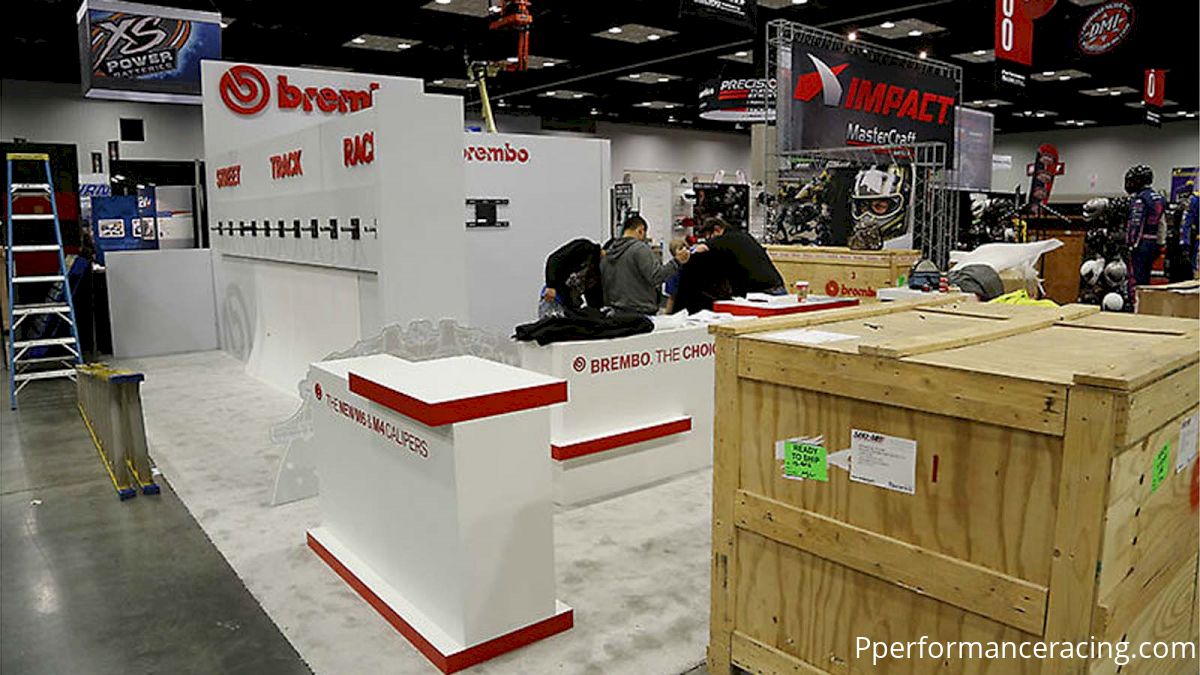An Exhibitor’s Guide To Trade Shows
An Exhibitor’s Guide To Trade Shows
Even experienced veteran exhibitors can use a refresher on the dos and don’ts of trade shows.

By Jonathon Masters
Previously, we spoke about the do's and do not's of attending race industry trade shows both as a racer and as a non-exhibiting company. The last group on our list of entities that make trade shows successful is the exhibitors — the companies that spend the time and money to display their products and services to the race industry for 2-3 days at trade shows across the country.
Whether you’re heading to Indy, Des Moines, Syracuse, Springfield, or Philadelphia, there are some do’s and do not's for exhibitors. Now, some of the readers are old pros at the trade show exhibiting game and know a lot of the basic rules. This list is going to focus a lot on the first-timers or smaller operations that do not have the luxury of full-time marketing departments. But pros will want to pay attention too, because it’s never too late to learn something new.
DO: Get your booth early. Much like real estate, the three most important factors in trade show space is location, location, and location. Many shows have companies with spots reserved for them going back many years. New companies must pick from a smaller and less desirable spots. It’s you goal to get the best of those spaces. If you are too late to get your spot in the major shows, you’ll be looking at a spot in a hallway, side room, or buried in the back.
DO NOT: Overspend on big shows. This is especially important when regional shows are more affordable and offer more face to face time with buyers. The most well-known events in Las Vegas and Indianapolis are an important showcase for companies both small and large, but sometimes you can get more bang for your buck in Syracuse, Des Moines, Springfield, and Philadelphia. Those shows are much cheaper in terms of exhibition space and lodging. They also pull a lot of regional attendees from the surrounding areas that do not have the time off to make the trips to the mega shows. You will also be able to form stronger bonds thanks to less hectic crowds and fewer exhibitors competing for the attendee’s time.
DO: Treat every attendee that walks up the same as the next. Do not let your time be filled with talking to the big-name buyers and teams while avoiding unknown racers and smaller speed shops. You never know when today’s low-volume buyer will be tomorrow’s hot commodity. Today’s racing industry is ever shifting, and you will often see teams and companies rise and fall in a matter of months. It’s best to have a great relationship with everyone.
DO NOT: Sit down all the time. Stand up in your booth and reach across that table into the aisle to shake hands and pull people in. Even if you aren’t an outgoing person by nature, for the next three days you need to be the life of the party. If you are usually low energy then, for the next three days do whatever you must to get wired up like 3-year-old on three cups of coffee and five bags of Skittles. You should have a permanent smile on your face — like Jack Nicholson playing the Joker in "Batman" — for the next 72 hours. No one wants to stop at a booth to drag conversation out of a grumpy recluse with his eyes down at his phone.
DO: Use the tools the show gives you plus some your own. Tell people on social media that you are going and give them your booth number ahead of time. If you have an email list, then send out an e-blast to let people know. Some shows will help you and include some economic advertising options to show off your booth. Some of those tools are even free.
DO NOT: Be a bad neighbor. Be somebody that other exhibitors like to share a wall with at the show. Not only will this make everyone happier in your area, but it may also lead to doing business with your surrounding companies. In the long run, it could even help you improve your booth location in later years.
DO: Read the show rules when it pertains to booth design. Show directors do not want to tell a vendor they have to take a sign down because it doesn’t match show rules on size or location, but realistically, it happens at nearly every show — and is intended to be fair to everyone. All shows have clear rules on what you can and cannot do in your booth. Please read them over and if necessary ask questions. No one wants to spend weeks on a booth only to be told it doesn’t comply after you set it up. Work smarter and not harder on this.
DO NOT: Arrive late or leave early. You paid good money for this spot. Make the most out of every minute. Every minute you miss might cost you the sale that made it all worth it. Those of you who enjoy a few drinks at night during these shows, remember: If you’re going to be at it hard at night, then you need to be prepared to own it in the morning.